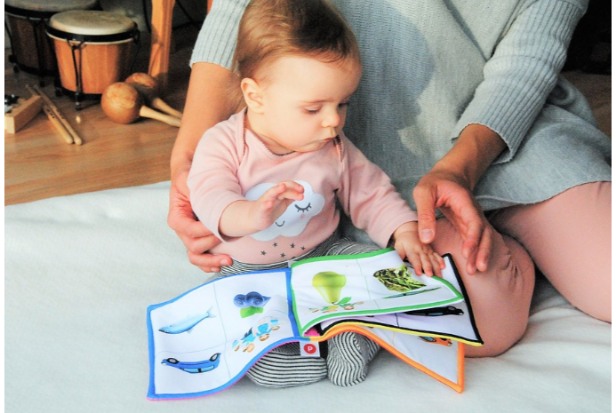If you know how to combine breastfeeding and pumping, breastfeeding and pumping don’t have to be mutually exclusive activities. It takes a lot of time and effort to breastfeed, which is a big commitment. Your infant will need you to breastfeed exclusively, which means you must be present almost constantly. Some of this stress can be reduced by giving your baby breast milk in a bottle.
Both you and your baby will need to practice pumping while simultaneously breastfeeding. However, with practice, combining breastfeeding and pumping can help you extend your breastfeeding journey and reduce some of your stress.
Why Breastfeeding And Pumping?
There are a variety of reasons why you might decide to mix breastfeeding and pumping. Here are a few typical examples:
- Increasing the milk you produce. In general, supply and demand govern breast milk production. Your breasts may produce more milk if more is drawn out of them. This can be a good first step to take if you’re trying to increase your milk supply.
- providing comfort in discomfort This involves removing milk from your breasts to help with clogged ducts and mastitis (breast tissue inflammation).
- For bottles. If you need to be away from your baby for any amount of time, you might want to have some breast milk on hand for bottle feeding.
- breastfeeding issues. Having extra milk on hand to supplement breastfeeding with a bottle can be helpful if your baby has trouble latching or drinking enough from your breast alone.
How Should I Pump My Breasts?
It is possible to encourage the early production of colostrum and milk by hand expression, also known as hand pumping. Hand expression typically doesn’t produce enough milk to feed a baby after the first week or so of life, so the majority of women who pump must use an actual electric breast pump. It’s crucial to select a breast pump in accordance with your primary pumping objectives. It’s acceptable to use a simple, non-electric hand pump if you’re pumping to relieve occasional engorgement.
A hospital-grade double electric pump is frequently needed to start and maintain a mother’s supply of breast milk when she is pumping for preemies or sick babies in the NICU.
A double electric pump is required if you plan to frequently pump or are already doing so, as many mothers do when their child is with them at work. It is advised to continue direct breastfeeding when you are at home together when pumping because you are away from your breastfed child. Generally speaking, breastfeeding directly rather than pumping will help you maintain your milk supply better. This is due to the fact that babies typically receive more milk when they are breastfed than they do when mothers pump milk on a regular basis.
How Can Mothers Alternate Between Pumping And Breastfeeding?
For many mothers, pumping during or immediately following a feeding session is beneficial. Perhaps during a feeding, your baby only takes milk from one breast. If so, you can breastfeed while pumping on the opposite side. Infants occasionally take milk from both breasts, but they don’t always consume the entire supply. You can take advantage of the letdown that baby’s feed has already produced by pumping right after a feeding session. You can schedule pumping sessions whenever your baby typically goes for longer stretches between feedings, perhaps during a nap.
In terms of how long you should pump, aim for 15 to 20 minutes hooked up to the pump. Depending on the amount of milk your body produces, it might take less time or more time. You should pump until your breasts feel completely depleted, at which point the milk production will probably have slowed.
When And For How Long Should I Pump?
Your baby’s feeding schedule should be as closely followed as possible while pumping. This calls for 15-minute pumps spaced every three to four hours. This procedure can be sped up by using a double breast pump.
You might consider power pumping to increase milk production. This tactic is used to raise the demand for breast milk and, as a result, the supply of breast milk. It should take a week or two for your breast milk production to increase.
You will need about an hour to power the pump. Start by pumping for twenty minutes, followed by ten minutes of rest and ten minutes of pumping in succession for a total of one hour. This should take the place of one daily routine pumping session.

What Volume Of Milk Should I Pump?
Many women are concerned that they won’t have a sufficient supply before giving up their child to another caregiver or going back to work. Before you leave, you don’t have to have a freezer full of breastmilk. For every hour you will be away from your infant, you should generally pump 1 oz. 9-10oz for an average work day should be just fine, even if you get stuck in a little traffic.
When Nursing, How Frequently Should Mothers Pump?
Your body, way of life, and your baby’s dietary requirements all play a major role in how frequently you pump while breastfeeding. However, it’s advised to gradually increase the number of sessions if you’re just starting out with a pumping routine.
When you make the decision to incorporate pumping into your routine, start out with just one session per day. You can try adding in another session in the evening after the baby goes to bed, or really any other time during the day that works for you, once your body gets used to this pumping session, usually within a week or so. The best course of action is to gradually increase the number of sessions, ideally allowing your body time to adjust between each one before adding another.
In general, it’s advantageous to pump after every missed or skipped feeding in order to maintain a milk supply that keeps up with your baby’s feeding requirements. A newborn’s typical feeding schedule might be every one to three hours, whereas an infant might prefer to nurse every three to four hours. A baby may feed as frequently as once every hour while experiencing cluster feeding.
What Kind Of Breast Pump Do I Need?
Parents who are pumping for their infants have a choice between a manual and an electric pump. For occasional pumpers, manual pumps are ideal because they require more physical effort and are typically more affordable. However, electric ones allow you to work more quickly and save time if you pump frequently.
*Having a purpose in mind is also crucial. Do you want enough milk for your baby while you’re with them or do you want enough to switch between feedings throughout the day? It will be easier on you and your body if you have a target pumping goal.
Is It Acceptable To Breastfeed And Only Use The Pump Once Per Day?
Any mother who has struggled to find the coziest breastfeeding position (read: least awkward and backbreaking) probably knows that pumping can be equally as uncomfortable without a good set-up. And let’s face it, a hands-free pumping bra can only go so far, so most mothers don’t want to pump more often than necessary, leaving many to wonder if it’s okay to only pump once per day.
What Are Some Advice For Mixing Breastfeeding And Pumping?
It takes a lot of time, effort, and support to breastfeed and pump. It is neither simple nor inexpensive to breastfeed a baby.” Every week, mothers devote a significant amount of time to feeding their infants—whether through breastfeeding, pumping, or both—exceeding the 40 hours that are typical for a full-time job.
Some Advice on How to Pump and Breastfeed at the Same Time:
- Make sure to purchase a hands-free pumping bra when using a double electric pump!
- If at all possible, use a wearable pump to achieve “hands-free” operation. On account of this, you are able to multitask and pump while performing daily tasks (such as driving to or from work).
- After breastfeeding, pump. It’s common for babies to wake up with some degree of engorgement once they start sleeping for longer periods at night; mothers can take advantage of this by pumping extra breast milk after the baby’s first feeding of the day.
- While exercising, read a book or watch your preferred show.
- Make sure your pump’s flanges are the appropriate size for your breasts because, for some mothers, upsizing or downsizing flanges can significantly affect how much milk one pumps.
- Put a small towel or blanket over your pumping flanges so that you can’t see how much milk is being collected if you find it stressful to keep an eye on how much milk you are collecting.
- Before, during, and after pumping, a light breast massage can be comforting and aid in producing more milk.
- Maintain a steady supply of the essential pump parts and materials, such as milk storage bags, tubing, and flanges, etc. In this manner, in the event that something is lost or damaged, you are ready and your pumping schedule is not disrupted.
- Make sure you have a solid support system in place so that others can assist you in allocating time to both pumping and breastfeeding as necessary.
Most of the time, mothers who pump are able to switch between breastfeeding and pumping without experiencing any significant problems. Consult your healthcare provider or a lactation consultant/IBCLC as soon as you can for medical advice and assistance if you are having trouble breastfeeding, pumping, or doing both at the same time.
Conclusion
Combining breastfeeding and pumping may be helpful if you discover that your milk supply is less plentiful than you (or your baby) would like. When you need more sleep or have to be away from your baby for an extended period of time, pumping after breastfeeding sessions can provide a way to collect breast milk for bottles.
You might want to talk to a lactation consultant about your situation because breastfeeding and pumping schedules can vary depending on a variety of factors.
You should consult your doctor or a lactation specialist if you are having problems with your breasts or find that your milk supply is uncomfortable. Their assistance may make breastfeeding and pump more bearable for you. It’s critical to keep in mind that every person has unique experiences.
You might find that combining breastfeeding and pumping is your favorite thing to do, or you might decide it’s overrated, like peanut butter and jelly. To feel however you feel is acceptable. When it comes to feeding a baby, there is no one right way to do it.



